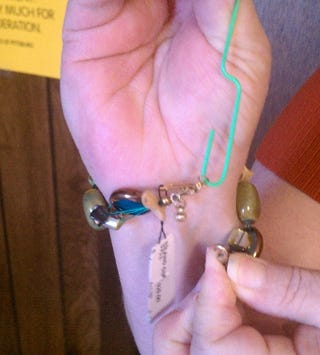If you're serious about purchasing a Lexington home, obtain a
prequalification letter before you begin shopping. If you don't, you
may have a hard time getting the attention of home sellers or real estate
agents. Prequalification involves choosing a mortgage lender and a loan program
and providing some information.
Some lenders' prequalification process is pretty basic
–they'll ask you about your income, debts and assets, and they'll calculate a
maximum loan amount and purchase price based on that information. Loan officers
may not verify your information or check your credit rating. Other lenders will
be much more thorough – there is no industry standard for prequalification.
Basic Prequalification Letter
Once the lender has completed its prequalification process
(extensive or basic), it can issue you a prequalification letter. This is what
you'll give your real estate agent (if you have one) or the seller's agent (if
you're shopping on your own). The basic prequalification letter says something
like this:
To whom it may concern:
Ron and Cecilia Jones have been pre-qualified for a
residential mortgage of up to $300,000 at an interest rate of up to 5.5
percent. This pre-qualification letter does not constitute loan approval or
commitment to rate, fees, or term. Any misrepresentation in the loan
application or adverse change in the applicants' financial position may void
this pre-qualification letter, as would a poor credit history by accepted
standards.
A completed loan file with an acceptable appraisal must be
provided for underwriting review before a loan decision can be made.
If you have any questions or would like additional
information, you can reach us by phone at 888-888-8888 or via email at
info@abcmortgage.com.
Notice that there is nothing in this letter to indicate that
the would-be buyers are capable of being approved for a mortgage. It does, however,
indicate that they're not just looking on impulse; they have at least
approached a mortgage lender about financing.
Detailed Prequalification Letter
The more detailed prequalification letter is almost a
preapproval. The lender may have some actual proof of income and assets from
you, and it may have checked your credit. In that case, your letter will look
more like this one:
XYZ Mortgage Company
Ronand Cecilia Jones is pre-qualified for a residential loan
in the amount of $300,000 to purchase property to be determined. This
qualification is based on a 30 year conventional mortgage at 6.5% interest with
total property taxes not to exceed $6,500.
Based upon information received at application, along with
credit and income verification received and reviewed by XYZ Mortgage Company,
the applicants meet the requirements for a conventional loan at the
above-listed terms.
We have also reviewed cash assets and reserves of the
applicants, and determined that they have sufficient funds to complete the
transaction. This pre-qualification letter does not constitute loan approval or
commitment to rate, fees, or term. Any misrepresentation in the loan
application or adverse change in the applicants' financial position may void
this pre-qualification letter, as would a poor credit history by accepted
standards.
If you have any questions or would like additional information, you can reach us by phone at 888-888-8888 or via email at info@xyzmortgage.com.
This pre-qualification letter is not intended to confer any
rights or privileges upon third parties including, but not limited to, seller
of real property. A completed loan file with an acceptable appraisal must be
provided for underwriting review before a loan decision can be made.
You can see that in this case, the lender has checked credit
and reviewed supporting documentation. A letter like this would inspire more
confidence in both buyers and sellers.
Important Stuff!
Note: when you're negotiating to purchase a house, you might
not want the seller to know how much you're prequalified to borrow. If, for
example, you're offering $275,000 with a $240,000 mortgage for a house listed
at $300,000, you probably don't want the sellers to see a letter prequalifying
you for a $325,000 purchase with a $300,000 mortgage. Ask your lender to give
you several letters with different amounts, or simply request a letter that
conforms to the offer you plan to make.







